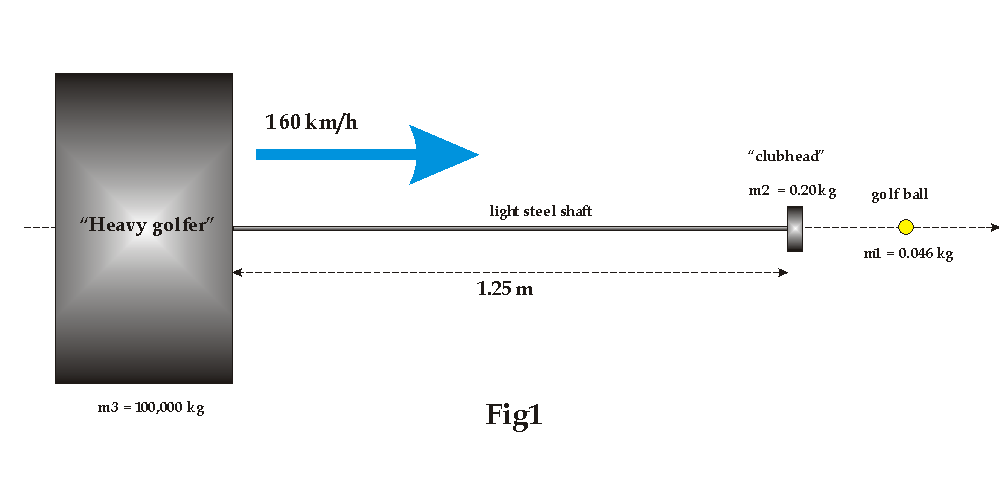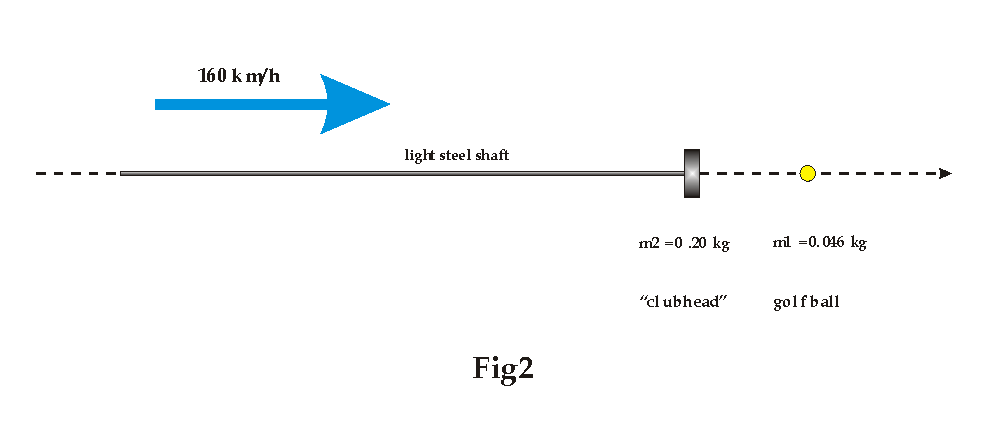HEAVY HIT
by nmgolfer © 2008
One issue constantly being debated on golf forums
is wether or not a golfer can resist clubhead deceleration at impact.
The topic is sometimes refered to as "heavy hit".
by nmgolfer © 2008
One issue constantly being debated on golf forums
is wether or not a golfer can resist clubhead deceleration at impact.
The topic is sometimes refered to as "heavy hit".
To wit a poser (little mandrin of la mancha ... slayer of windmills)
(on the BM tgm forum) recently posed just such a question
Year end musings On a TGM forum there is presently a thread on 'heavy hit'. With Christmas on its way it sort of naturally led me leaning a bit towards religion viewing this thread.ref: http://www.brianmanzella.com/forum/golfing-discussions/11272-year-end-musings.html |
Consider case 1

It is safe to say the large mass will not even notice the impact. It has so much inertia that the impact has no effect on it what so ever and the large mass will continue moving at 160 km/hr during and after the collision. During the collision the 0.2 kg club head mass will decelerated due to the contact force it shares in common with the ball. While the clubhead mass (labeled beam in the diagram above) is slowing down the shaft between it and the larger mass acts as a spring and is being compressed. The amount of compression that occurs depends on the integral of the velocity differential beteen the club head mass. But its not negligible.
In case 1 the shaft spring force gives back energy it stored during the deformation to the clubhead mass during restitution phase of the collision. Therefore the ball will get a little extra push from the club head mass. Consequently the ball in case 1 goes farther than the ball in case 2. Mandrin of la mancha got it wrong. But then this should not surprise us. Its "par" for the course.
BM: As far as Mandrin's question? I guess that the ball would go NEAR EXACTLY the same distance.
mandrin of la mancha: Brian,
If eventually it just so happens that it is you having come up with the correct answer, who is putting the golf balls under your Christmas tree?

 To make the situation as extreme as possible the shaft is not aligned sidewise, as occurs when hitting in a real golf swing during impact, but rather length wise. Hence all of the weight of our imaginary 'heavy golfer', weighing only 100000 kg, - equivalent to the weight of 2,174,000 golf balls - is directly bearing onto the ball, at impact.
To make the situation as extreme as possible the shaft is not aligned sidewise, as occurs when hitting in a real golf swing during impact, but rather length wise. Hence all of the weight of our imaginary 'heavy golfer', weighing only 100000 kg, - equivalent to the weight of 2,174,000 golf balls - is directly bearing onto the ball, at impact.